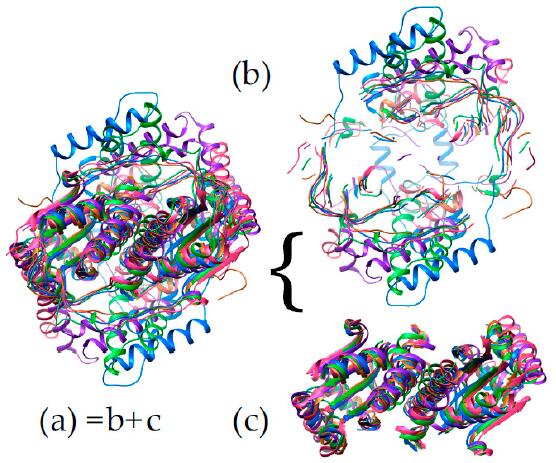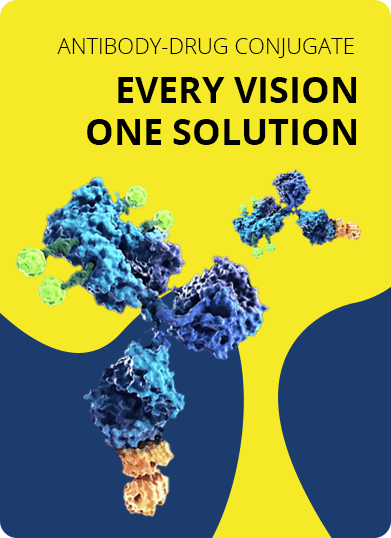- Home
- UTC Development
- Antibody-Enzyme Conjugate Development
- Antibody-directed Enzyme Prodrug Therapy (ADEPT) Development
- Antibody-Nitroreductase Conjugate Development
Antibody-Nitroreductase Conjugate Development Services
As a professional service provider in antibody-drug conjugates (ADCs), Creative Biolabs now provides antibody-nitroreductase conjugate development services based on our abundant linker library and advanced bio-conjugation strategies to help clients boost their ADEPT project.
Nitroreductase
Nitroreductases (NRs) are a family protein participating in the reduction of nitrogen-containing compounds which contain the nitro functional group. These nitroreductase members usually use homodimers FMN as a cofactor. A number of these proteins are oxidoreductases such as oxygen-insensitive NAD(P)H nitroreductase (FMN-dependent nitroreductase) and NADH dehydrogenase. Most of them are found in bacteria, however, some of them are also found in eukaryotic homologs except for photosynthetic eukaryotes such as C. elegans, D. melanogaster, mouse and human. The nitroreductase of Enterobacter cloacae was found in E. cloaca isolated from a munitions facility, which with the ability to metabolize TNT (trinitrotoluene). Crystal structures of the E. cloacae and E. coli nitroreductases enzymes have been demonstrated with a variety of substrates and analogues bound.
 Fig.1 Superposition of NR-related superfamily members. (a) Common core structure is evident in an overlay of representatives of each of the NfsB (green), NfsA (blue), PnbA (purple) Frm2 (pink) and HUB (rust) subgroups. Panel (c) extracts the core secondary structure shared by the different subgroups (same overlay), while (b) shows all backbone ribbon present in (a) but excluded from (c). (Miller, 2018)
Fig.1 Superposition of NR-related superfamily members. (a) Common core structure is evident in an overlay of representatives of each of the NfsB (green), NfsA (blue), PnbA (purple) Frm2 (pink) and HUB (rust) subgroups. Panel (c) extracts the core secondary structure shared by the different subgroups (same overlay), while (b) shows all backbone ribbon present in (a) but excluded from (c). (Miller, 2018)
MOA of Nitroreductases
Nitroreductases enzyme catalyzes the hydrolytic cleavage of prodrug 5-(aziridin-1-yl)-2,4-dinitrobenzamide (CB 1954) and yields an effective drug 5-(aziridin-1-yl)-4-hydroxylamino-2-nitrobenzamide which is a potent DNA interstrand crosslinking agent. Some research has confirmed that the drug produced by nitroreductases enzymes catalyzed has displayed potency in treatment of Walker carcinoma cells. This enzyme, in the presence of NADH or NADPH, catalyzes the aerobic reduction of CB 1954 to 5-(aziridin-1-yl)-4-hydroxylamino-2-nitrobenzamide. This new compound can form interstrand crosslinks in the DNA of Chinese hamster V79 cells to which it is also highly toxic.
Antibody-nitroreductase Conjugate-based ADEPT
ADEPT using nitroreductases as the enzyme is under active development. The specific targeting capability of a monoclonal antibody enables the delivery of enzymes exclusively to the tumor site, thereby reducing collateral damage to the normal tissues. The antitumor prodrug CB 1954 is activated to the cytotoxic metabolite 5-aziridin-1-yl-4-hydroxylamino-2-nitrobenzamide by both rat DT-diaphorase and E. coli nitroreductase. However, E. coli nitroreductase is much more efficient to activate CB 1954. Importantly, when the combination of E. coli nitroreductase with CB 1954, it is cytotoxic to V79 cells that are insensitive toward CB 1954 only. Mammalian cells with the nitroreductase can enhance CB 1954 sensitivity with a bystander effect.
With our advanced technical platforms and experienced scientists, Creative Biolabs offers comprehensive antibody-nitroreductase conjugate development services in a timely and cost-effective manner. We also offer other various services regarding ADEPT development. Please contact us for more information and a detailed quote.
References
- Miller, Anne-Frances, et al. "Informing efforts to develop nitroreductase for amine production." Molecules 23.2 (2018): 211
- Distributed under Open Access License CC BY 4.0, without modification.
For Research Use Only. NOT FOR CLINICAL USE.

Online Inquiry
Welcome! For price inquiries, please feel free to contact us through the form on the left side. We will get back to you as soon as possible.
